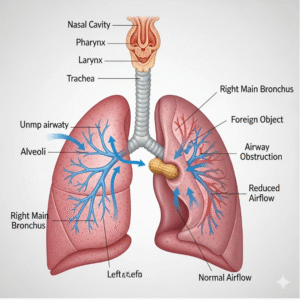Overview
Q fever is a rare but potentially serious infectious disease caused by the bacterium Coxiella burnetii. It primarily affects animals such as cattle, sheep, and goats, but can be transmitted to humans, usually through inhalation of contaminated dust. While some people may experience no symptoms, others can develop flu-like illness, pneumonia, or hepatitis. If untreated, it can become chronic and lead to life-threatening complications, particularly in people with heart valve problems or weakened immune systems.
What is Q Fever?
Q fever is classified as a zoonotic disease—meaning it spreads from animals to humans. The bacterium Coxiella burnetii is highly resistant to environmental stresses and can survive for long periods in dust, soil, and animal waste. In humans, infection can present as an acute illness with sudden fever, chills, muscle aches, and fatigue. Chronic Q fever can occur months or years later, often involving the heart (endocarditis) or blood vessels.
Symptoms
Symptoms usually develop 2–3 weeks after exposure and may include:
- High fever (up to 40°C / 104°F)
- Severe headache
- Muscle aches
- Chills and sweats
- Fatigue and weakness
- Cough or chest pain
- Nausea, vomiting, or diarrhea
- Hepatitis-related symptoms (e.g., jaundice, abdominal pain)
- In chronic cases: persistent fever, weight loss, night sweats
Causes
The infection is caused by Coxiella burnetii. People typically become infected by:
- Inhaling dust contaminated by animal birth products, urine, feces, or milk
- Contact with infected livestock, especially during birthing season
- Drinking unpasteurized milk from infected animals
- Rarely, from ticks (more common in animals than humans)
Risk Factors
You are at higher risk if you:
- Work with livestock (farmers, veterinarians, slaughterhouse workers)
- Live near farms with sheep, goats, or cattle
- Consume unpasteurized dairy products
- Have existing heart valve disease or weakened immune function
Complications
Without treatment, Q fever can cause:
- Chronic endocarditis (infection of the heart valves)
- Chronic hepatitis
- Infection of blood vessels (vascular infection)
- Lung scarring or chronic fatigue syndrome
- Complications during pregnancy, such as miscarriage or low birth weight
Prevention
- Avoid contact with animal birth materials
- Wear protective masks and gloves when working with livestock
- Ensure proper ventilation in animal facilities
- Consume only pasteurized milk and dairy products
- Implement biosecurity measures on farms
- In high-risk countries, vaccines are available (though not widely used globally)
Treatment Options – Korea
In Korea, Q fever is treated in specialized infectious disease units, with a focus on rapid diagnosis through serology and PCR testing.
Medical management includes:
- Acute Q fever: Doxycycline (first-line antibiotic) for 14 days
- Chronic Q fever: Combination of doxycycline and hydroxychloroquine for at least 18 months
- Hospitalization: Required for severe pneumonia, hepatitis, or heart involvement
- Supportive care: Includes fever management, hydration, and liver monitoring
- Public health measures: Korean Centers for Disease Control and Prevention (KCDC) works closely with farms to prevent outbreaks through livestock monitoring, disinfection, and education programs.













